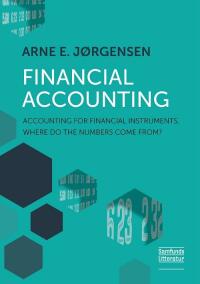

 PLEASE GIVE EXPLANATION WITH DETAILS.
PLEASE GIVE EXPLANATION WITH DETAILS.
Gage Corporation has two operating divisions in a semiautonomous organizational structure. Adams Division, located in the United States, produces a specialized electrical component that is an input to Bute Division, located in the south of England. Adams uses idle capacity to produce the component, which has a domestic market price of $13. Its variable costs are $5 per unit. Gage's U.S. tax rate is 40 percent of income. In addition to the transfer price for each component received from Adams, Bute pays a $2 per unit shipping fee. The component becomes a part of its assembled product, which costs an additional $3 to produce and sells for an equivalent of $22. Bute could purchase the component from a Manchester (England) supplier for $10 per unit. Gage's English tax rate is 70 percent of income. Assume that English tax laws permit transferring at either variable cost or market price. Required: a-1. What are the respective profits after tax for both the Adams Division and Bute Division of Gage if the transfer price is $5. a-2. What are the respective profits after tax for both the Adams Division and Bute Division of Gage if the transfer price is $13. a-3. What transfer price is economically optimal for Gage Corporation? Complete this question by entering your answers in the tabs below. Reg A1 Reg A2 Req A3 What are the respective profits after tax for both the Adams Division and Bute Division of Gage if the transfer price is $5. (Round your answers to 2 decimal places.) per unit Profit after tax (Adams) Profit after tax (Bute) per unit Gage Corporation has two operating divisions in a semiautonomous organizational structure. Adams Division, located in the United States, produces a specialized electrical component that is an input to Bute Division, located in the south of England. Adams uses idle capacity to produce the component, which has a domestic market price of $13. Its variable costs are $5 per unit. Gage's U.S. tax rate is 40 percent of income. In addition to the transfer price for each component received from Adams, Bute pays a $2 per unit shipping fee. The component becomes a part of its assembled product, which costs an additional $3 to produce and sells for an equivalent of $22. Bute could purchase the component from a Manchester (England) supplier for $10 per unit. Gage's English tax rate is 70 percent of income. Assume that English tax laws permit transferring at either variable cost or market price. Required: a-1. What are the respective profits after tax for both the Adams Division and Bute Division of Gage if the transfer price is $5. a-2. What are the respective profits after tax for both the Adams Division and Bute Division of Gage if the transfer price is $13. a-3. What transfer price is economically optimal for Gage Corporation? Complete this question by entering your answers in the tabs below. Reg A1 Reg A2 Reg A3 What are the respective profits after tax for both the Adams Division and Bute Division of Gage if the transfer price is $13. (Round your answers to 2 decimal places.) Profit after tax (Adams) Profit after tax (Bute) per unit per unit Gage Corporation has two operating divisions in a semiautonomous organizational structure. Adams Division, located in the United States, produces a specialized electrical component that is an input to Bute Division, located in the south of England. Adams uses idle capacity to produce the component, which has a domestic market price of $13. Its variable costs are $5 per unit. Gage's U.S. tax rate is 40 percent of income. In addition to the transfer price for each component received from Adams, Bute pays a $2 per unit shipping fee. The component becomes a part of its assembled product, which costs an additional $3 to produce and sells for an equivalent of $22. Bute could purchase the component from a Manchester (England) supplier for $10 per unit. Gage's English tax rate is 70 percent of income. Assume that English tax laws permit transferring at either variable cost or market price. Required: a-1. What are the respective profits after tax for both the Adams Division and Bute Division of Gage if the transfer price is $5. a-2. What are the respective profits after tax for both the Adams Division and Bute Division of Gage if the transfer price is $13. a-3. What transfer price is economically optimal for Gage Corporation? Complete this question by entering your answers in the tabs below. Reg A1 Reg A2 Req A3 What transfer price is economically optimal for Gage Corporation? O The transfer price economically optimal for Gage Corporation is $5 per unit. The transfer price economically optimal for Gage Corporation is $13 per unit


 PLEASE GIVE EXPLANATION WITH DETAILS.
PLEASE GIVE EXPLANATION WITH DETAILS.





